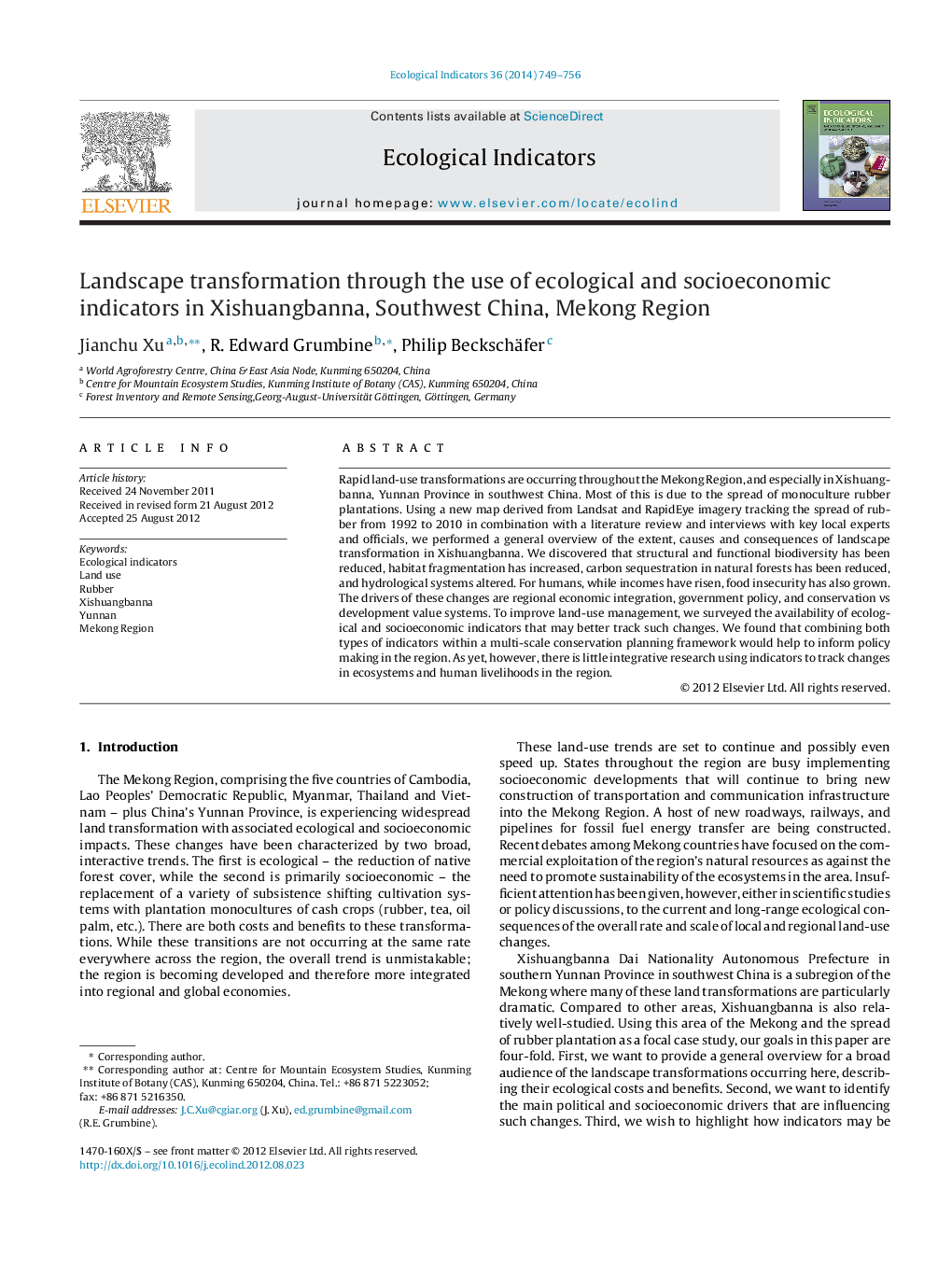| Article ID | Journal | Published Year | Pages | File Type |
|---|---|---|---|---|
| 4373372 | Ecological Indicators | 2014 | 8 Pages |
Rapid land-use transformations are occurring throughout the Mekong Region, and especially in Xishuangbanna, Yunnan Province in southwest China. Most of this is due to the spread of monoculture rubber plantations. Using a new map derived from Landsat and RapidEye imagery tracking the spread of rubber from 1992 to 2010 in combination with a literature review and interviews with key local experts and officials, we performed a general overview of the extent, causes and consequences of landscape transformation in Xishuangbanna. We discovered that structural and functional biodiversity has been reduced, habitat fragmentation has increased, carbon sequestration in natural forests has been reduced, and hydrological systems altered. For humans, while incomes have risen, food insecurity has also grown. The drivers of these changes are regional economic integration, government policy, and conservation vs development value systems. To improve land-use management, we surveyed the availability of ecological and socioeconomic indicators that may better track such changes. We found that combining both types of indicators within a multi-scale conservation planning framework would help to inform policy making in the region. As yet, however, there is little integrative research using indicators to track changes in ecosystems and human livelihoods in the region.
